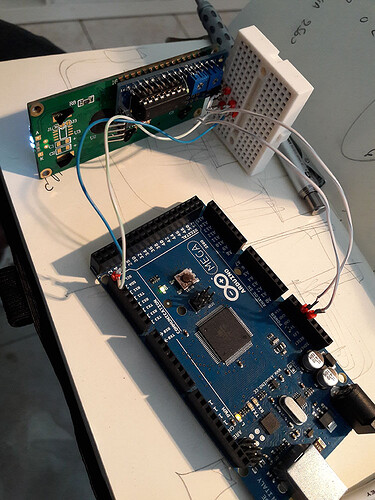Hello, I'm trying to get an LCD display to work, in order to print some measurements i take but I'm running into problems.
I use an Arduino Mega 2560 board, an LCD display (which i don't know any product number), and a backboard "LCD I2C Breakout board" which uses PCF8574N chip.
My circuit is GND - GND
SDA - pin20 SDA
SCL - pin21 SCL
VCC - 5V
I runned i2c scanner and got 0x20 as an adress which i searched online to found (0x20, 4, 5, 6, 0, 1, 2, 3, 7, NEGATIVE) because the code i used had an adrress like that.
and that is the code
/* Demonstration sketch for PCF8574T I2C LCD Backpack
Uses library from https://bitbucket.org/fmalpartida/new-liquidcrystal/downloads GNU General Public License, version 3 (GPL-3.0) */
#include <Wire.h>
#include <LCD.h>
#include <LiquidCrystal_I2C.h>
LiquidCrystal_I2C lcd(0x20, 4, 5, 6, 0, 1, 2, 3, 7, NEGATIVE); // 0x27 is the I2C bus address for an unmodified backpack
void setup()
{
// activate LCD module
lcd.begin (16,2); // for 16 x 2 LCD module
lcd.setBacklightPin(3,POSITIVE);
lcd.setBacklight(HIGH);
}
void loop()
{
lcd.home (); // set cursor to 0,0
lcd.print(" HELLO");
lcd.setCursor (0,1); // go to start of 2nd line
lcd.print(millis());
delay(1000);
lcd.setBacklight(LOW); // Backlight off
delay(250);
lcd.setBacklight(HIGH); // Backlight on
delay(1000);
}
So by using that address i got text instead of bars but only weird characters. So i could really use some help. I have tried many other codes and libraries with no luck. As you may understand i know very little so be patient.
i attach pictures of circuit and LCD, thank you for your time


